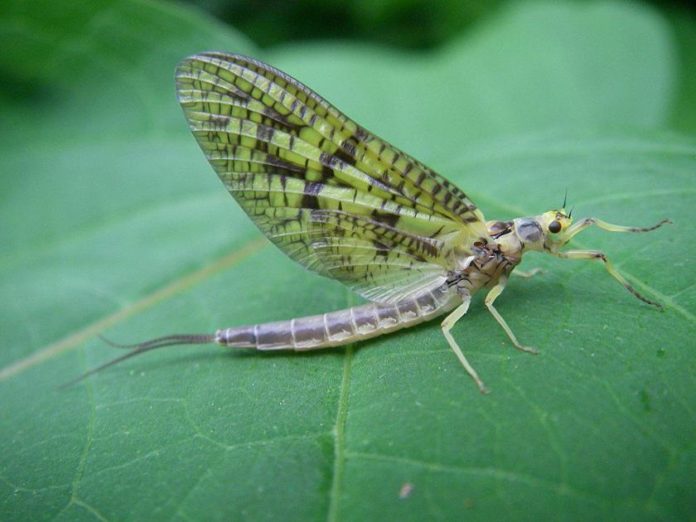They might be called mayflies, but they don’t always hatch in May.
Fly anglers love them because — well, because trout love them whenever they hatch. The fact that they hatch mostly in springtime, when water temperatures are in a range that causes trout to feed actively, is a happy bonus.
Mayflies, for those not familiar with the term, are aquatic insects that have a one-year life cycle. Their larval form, which anglers call “nymphs,” live underwater for almost the entire year. At a certain water temperature, which varies from species to species, the nymphs move to the water’s surface and emerge as sexually immature winged adults.
Those adults — known to anglers as “duns” — leave the water, spend a day or two clinging to streamside vegetation, and then molt once again into sexually mature adults called “spinners.”
From then on, their hours are numbered. They fly to the middle of the stream, mate in midair, lay their eggs and die.
On fertile streams, mayfly hatches can launch trout into feeding frenzies that must be seen to be believed. The upper Elk River in Randolph and Webster counties, for example, is known for its intense mid-May hatch of Sulfur mayflies. Elk regulars call the dense, cloud-like mating swarms of rust-colored spinners “the red fog.”
Anglers on Shavers Fork in Randolph County look forward to the Green Drake hatch in late May and early June. Green Drakes are among the largest mayflies, and when they’re present in large numbers, the trout can’t seem to resist them.
Not surprisingly, many fly anglers build their spring fishing schedules around the major mayfly hatches. Here’s a rough guide as to when those hatches occur:
Little Blue-winged Olive
Usually emerges in early afternoon. Nymph and adult forms are both effective. Size 18.
Quill Gordon
Usually emerges in early to mid-afternoon. Nymph and adult forms are both effective, especially early in the hatch. Size 14.
Little Blue Quill
Usually emerges in late morning or early afternoon. Nymph and adult forms are effective, especially in pocket water. Size 18.
Hendrickson
Usually emerges in early to mid-afternoon. Trout often focus on egg-laden female spinners. Size 14.
Gray Fox
Can emerge at any time. Nymph and dun stages are particularly effective. Size 12-14.
March Brown
Can emerge at any time, but usually in early afternoon. Duns are usually effective, but nymphs are particularly so. Size 10-12.
Sulfur
Emerges from late morning through evening. Dun and spinner stages are particularly effective. Size 14.
Green Drake
Usually emerges in afternoon and early evening. Dun and spinner both are effective. Size 8-10.
Credit: Source link































